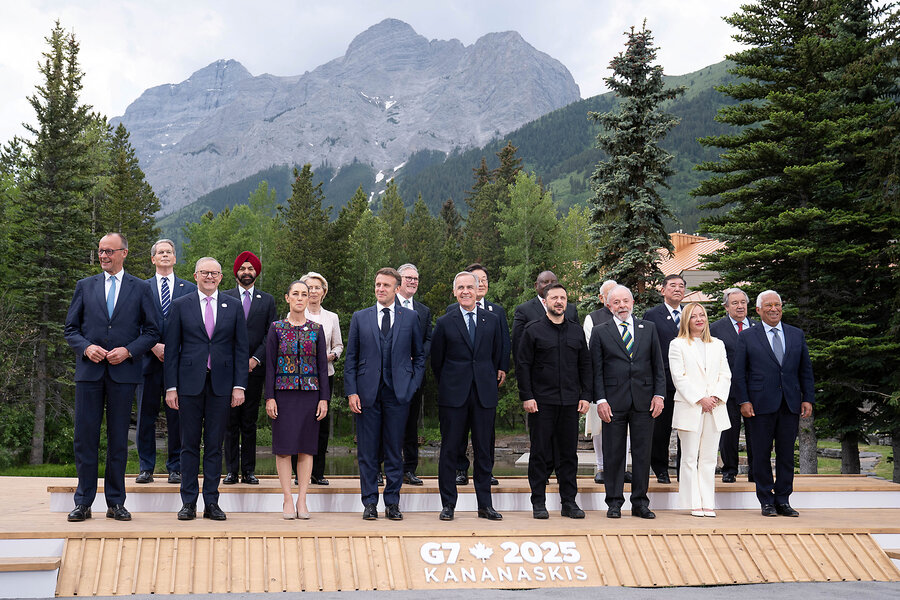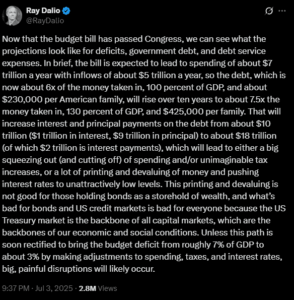
Leading up to the Group of Seven (G7) summit in Canada, the annual gathering of the world’s most advanced economies was informally dubbed the “G6 plus one.” This moniker reflected the shifting dynamics within the group, as the United States, traditionally a steadfast ally, had imposed tariffs on its partners and taken oppositional stances on several key issues. The summit concluded on Tuesday evening, marked by President Donald Trump’s early departure to address the escalating conflict between Iran and Israel.
Despite these challenges, the summit, hosted by Canada, managed to make progress on various fronts. Under the guidance of Canadian Prime Minister Mark Carney, and with the participation of non-G7 democracies, the group was able to navigate around U.S. objections and focus on pressing global issues. As President Trump departed, he signed a joint statement advocating for a resolution to the Iranian crisis that would lead to a broader de-escalation in the Middle East, including a ceasefire in Gaza.
Cooperation Amidst Challenges
The summit’s ability to issue a joint statement on the Iranian crisis was a significant show of unity, especially as the conflict overshadowed the annual meeting. However, the leaders were unable to agree on a statement regarding the Ukraine war due to U.S. resistance. This impasse left the remaining summit leaders to quietly advance discussions on lower-profile global challenges such as migrant smuggling, energy security, critical minerals, and artificial intelligence.
The inclusion of leaders from non-G7 states, such as Ukrainian President Volodymyr Zelenskyy, Indian Prime Minister Narendra Modi, and Mexican President Claudia Sheinbaum, was pivotal. A photo taken on the summit’s final day captured 18 faces, symbolizing a shift in global alliances and a new status quo in international governance.
“Our partners are going to have to get used to moving ahead without us,” said Philip Luck, a former deputy chief economist at the U.S. Department of State and expert in international trade at the Center for Strategic and International Studies. “This isn’t an either-or situation. They’re just pushing ahead when the U.S. sits on its hands for a while.”
Expanding the Circle: From G7 to G17?
The summit concluded with seven narrow statements issued by the G7 members, rather than the usual comprehensive joint communique. This rare omission, reminiscent of the 2019 summit in France, highlights the deepening divisions among members over key global issues. With Mr. Trump back in office and the ongoing Russian invasion of Ukraine, these rifts have only widened.
John Kirton, founder and director of the G7 Research Group at the University of Toronto, views this as a sign of proactive engagement. As host, Prime Minister Carney extended invitations to leaders from South Africa, Brazil, India, Mexico, Ukraine, South Korea, and Australia, emphasizing the importance of “power and democracy.” These rising middle powers play a crucial role in the group’s dynamics, effectively transforming the G7 into a “G17” with the inclusion of top officials from the European Union and NATO.
“Mr. Carney intended this G7 to magnify the power and shared purpose on a much greater global scale with the democracies of the G17,” Dr. Kirton explained.
Historical Context and Future Implications
This year marks the 50th anniversary of the G7. As the summit commenced, Mr. Carney acknowledged the significant influence the U.S. has wielded over the group throughout its history. “The G7 is nothing without U.S. leadership,” he stated. However, President Trump’s controversial remarks, including his support for Russia’s return to the group and openness to China’s inclusion, prompted Mr. Carney to abruptly end a press conference.
Despite these tensions, President Trump contributed to the summit’s achievements on the sidelines. Notably, Canada and the U.S. agreed to finalize a trade deal within 30 days, and the U.S. and the United Kingdom concluded their trade negotiations. However, his early departure left other leaders without the opportunity to further their agendas.
After meeting with the group, President Zelenskyy received strong support from Mr. Carney, who condemned Russia’s actions in Kyiv as “barbarism” and announced new military aid from Canada to Ukraine.
“This year’s summit is not about the show that everybody is united. It’s not a love-in,” said Lori Turnbull, a political science professor at Dalhousie University. “It’s a ‘we have agreed on a set of action items.'” She emphasized that the summit’s outcomes are significant, regardless of U.S. participation.
As the global landscape evolves, the G7’s adaptability and willingness to embrace broader alliances will be crucial. The summit’s outcomes suggest a shift towards a more inclusive and cooperative approach, even as traditional alliances face new challenges.






